The Samsung Galaxy Watch 3 is the eagerly awaited successor to one of our favorite wearables, the original Samsung Galaxy Watch, which remains on our best smartwatch list despite being a couple of years old. But how do they compare?
No, you didn’t miss a smartwatch – there is no Galaxy Watch 2. Instead, Samsung has leapfrogged the sportsy Samsung Galaxy Watch Active 2 to name its next top-tier wearable the Galaxy Watch 3.
The new smartwatch has a leaner design and better specs, which is to be expected, given it’s been two years since the original Galaxy Watch came out in August 2018. It has more health and workout features, an ECG, SPO2 blood oxygen monitoring, and blood pressure tracking.
The real question is whether there’s been enough improvement to warrant the brand-new smartwatch’s high price, or if consumers should be satisfied with the reliable (and discounted) original Galaxy Watch. We don’t have an easy answer, unless you’re very budget-conscious – in which case, the new watch likely isn’t worth it.
But if you’re looking to replace an aging watch or are just curious how the old and new Galaxy Watches stack up, read on for our category breakdowns.
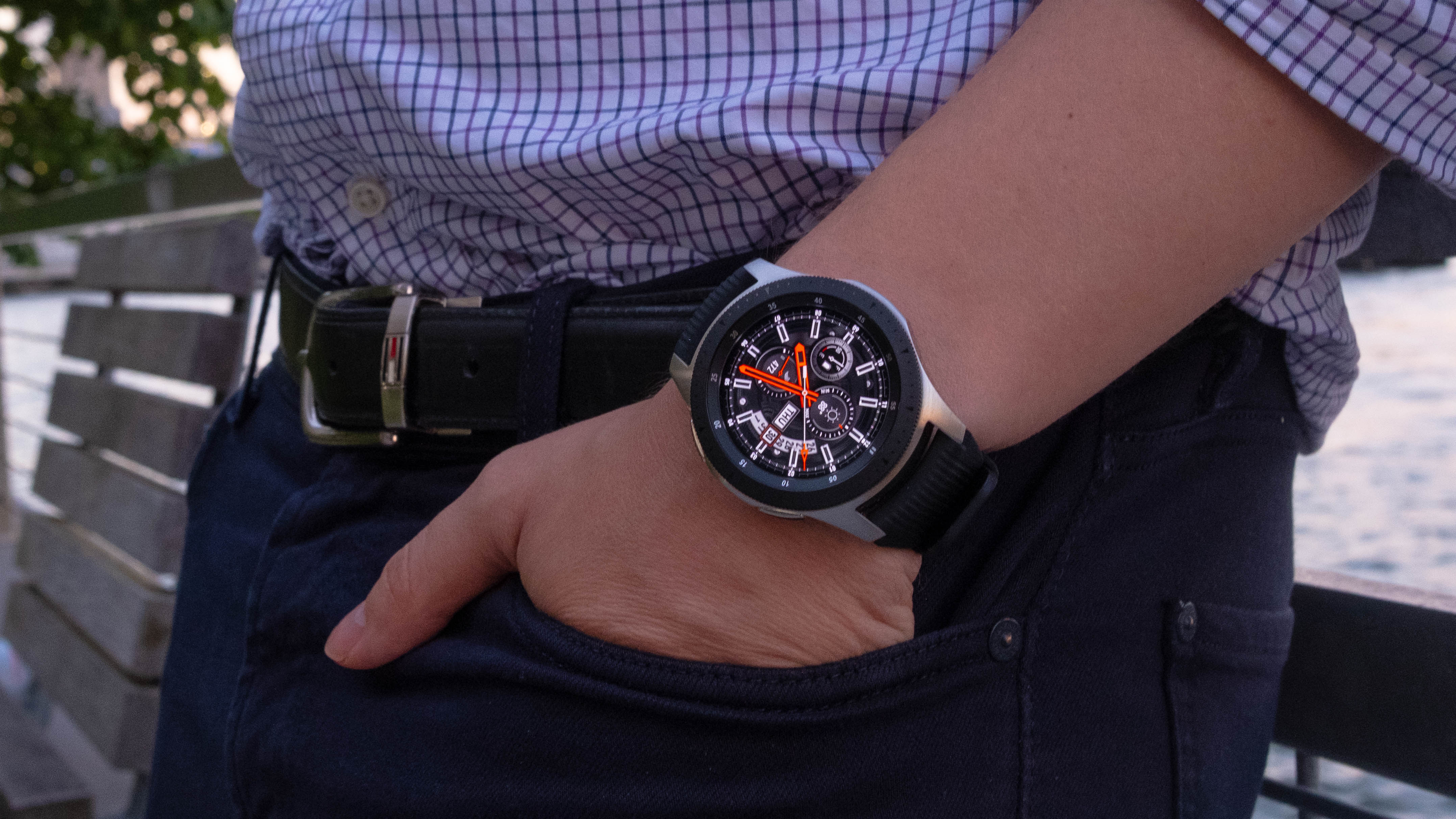
Samsung Galaxy Watch 3 vs Samsung Galaxy Watch price and release date
The Samsung Galaxy Watch 3 was announced on August 5, 2020 and became available a day later on August 6 in the US, UK and other ‘select countries,’ according to a Samsung press release, with more on the way. No, we don’t know why they skipped ‘Galaxy Watch 2.’
The Galaxy Watch 3 comes in two sizes: 41mm starting at $399 and 45mm starting at $429, both pricing for the non-LTE versions in stainless steel. These are available in Mystic Bronze, Mystic Black, and Mystic White colors with leather straps. The watch also comes in titanium in a single color (Mystic Black) with a metal strap.
The original Samsung Galaxy Watch was released in August 2018 alongside the Samsung Galaxy Note 9, with launch prices for the non-LTE versions of $329 / £279 / AU$499 for the smaller 42mm model and $349 / £299 / AU$549 for the 46mm. The LTE-connected models cost $379 / AU$599 (about £290) for the 42mm model and $399/ AU$649 for the 46mm version – but at this point, all of them have been discounted to more affordable prices.
The original Galaxy Watch came in Midnight Black and Rose Gold for the smaller 42mm size, and a single Silver color for the larger 46mm model.

Samsung Galaxy Watch 3 vs Samsung Galaxy Watch design
The Galaxy Watch 3 is a sleeker version of its predecessor, coming in 14% thinner and 15% lighter than the original Galaxy Watch, but most of the change is in the appearance: it simply looks less bulky than the older wearable.
Specifically, the lugs (the arms connecting the watch’s case to the band) are thinner, with open space around the watch band strap’s bar. There are other touches that make the watch look leaner – for instance, the cylindrical side buttons are more pronounced, jutting out rather than lining up flush with the edge of the case, as the original Galaxy Watch’s buttons did.
Some of these changes make the Galaxy Watch 3 simply look classier. The switch from a rubberized strap to a leather band is an obvious one, but the rotating bezel no longer has the triangle pips aligned with the inner bezel’s time intervals for an overall more minimal look. Not everything has changed, thankfully – the bezel still physically rotates, which was one of our favorite features in the original.
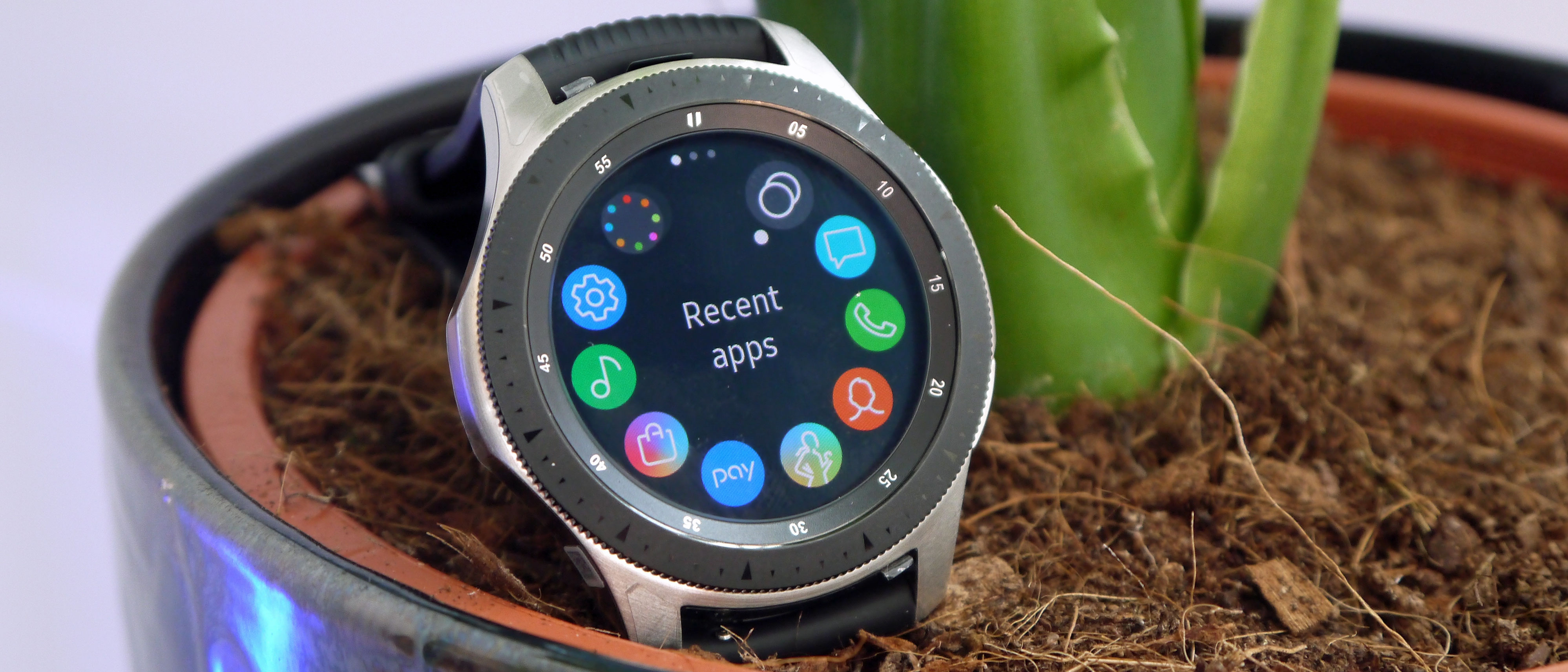
And the original Galaxy Watch remains an attractive device, though it looks a bit chunkier in comparison. Its lugs jut out a bit longer than its successor’s, but the 12.7mm and 13mm thicknesses for the 42mm and 46mm versions are bigger than the 11.3mm and 11.1mm thicknesses of the 41mm and 45mm versions of the new Galaxy Watch 3 (not a typo, the larger watch is thinner, somehow).
And while the smaller versions of both watches weigh about the same (49g), the larger versions packing more battery have the biggest disparity in weight: the 46mm original Galaxy Watch weighs 63g, while the 45mm Galaxy Watch 3 weighs just over 53g. And if you pony up for the 45mm titanium model, expect a relatively featherweight 43g.
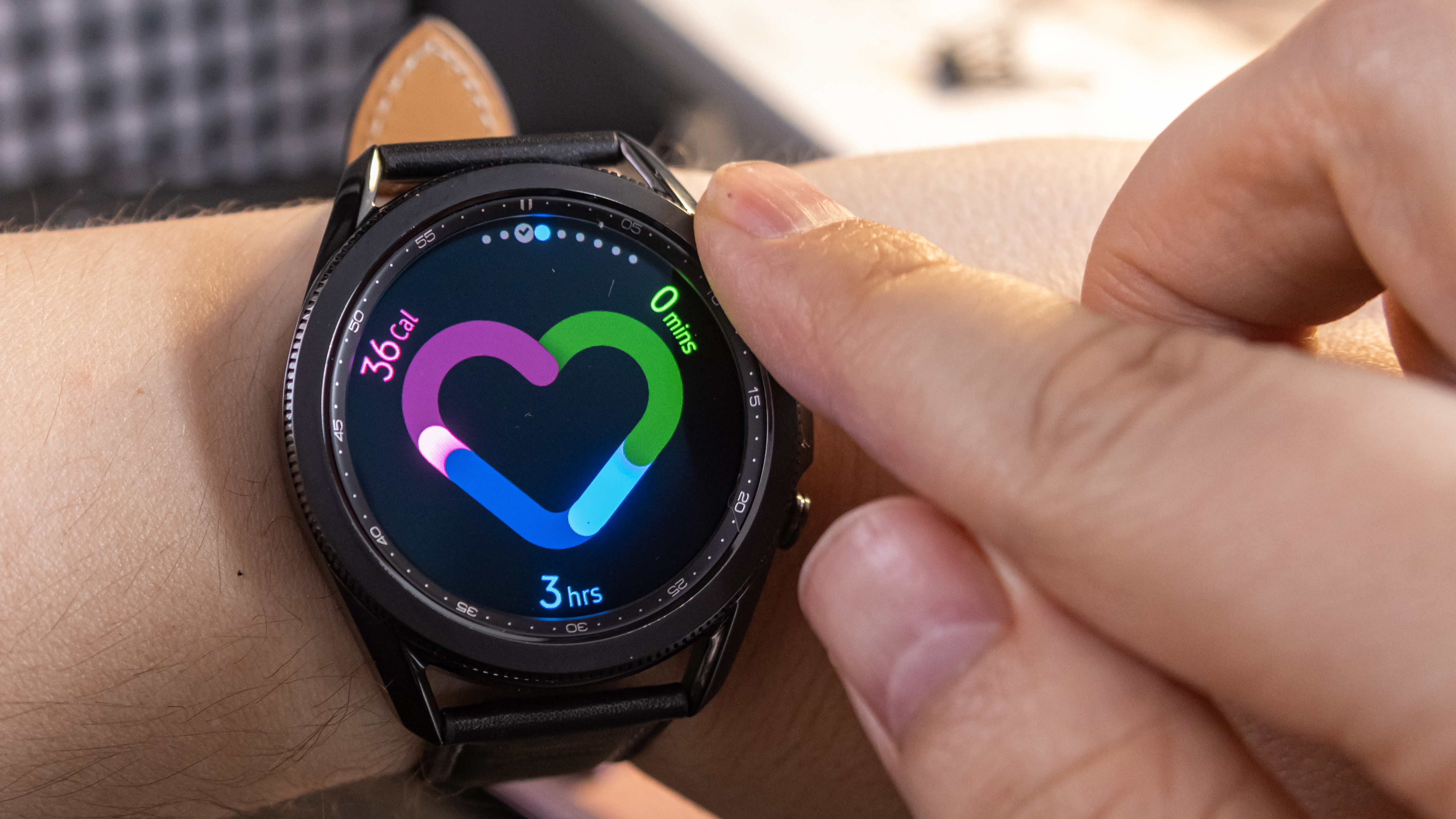
Samsung Galaxy Watch 3 vs Samsung Galaxy Watch display
Despite being smaller than the original Galaxy Watch, the new Galaxy Watch 3 has equivalent or slightly larger displays, with a 1.2-inch screen on the 41mm version and a 1.4-inch screen on the larger 45mm model. Compare that to the 1.2-inch screen on the 42mm and 1.3mm in the 46mm Galaxy Watch versions.
The other difference is curious: the Galaxy Watch’s display is protected by Gorilla Glass DX Plus, which was also used for the Galaxy Watch Active 2’s display. The Galaxy Watch 3, on the other hand, has Gorilla Glass DX.
Otherwise, both watches’ displays are full-color, always-on Super AMOLED with a 360 x 360 resolution.
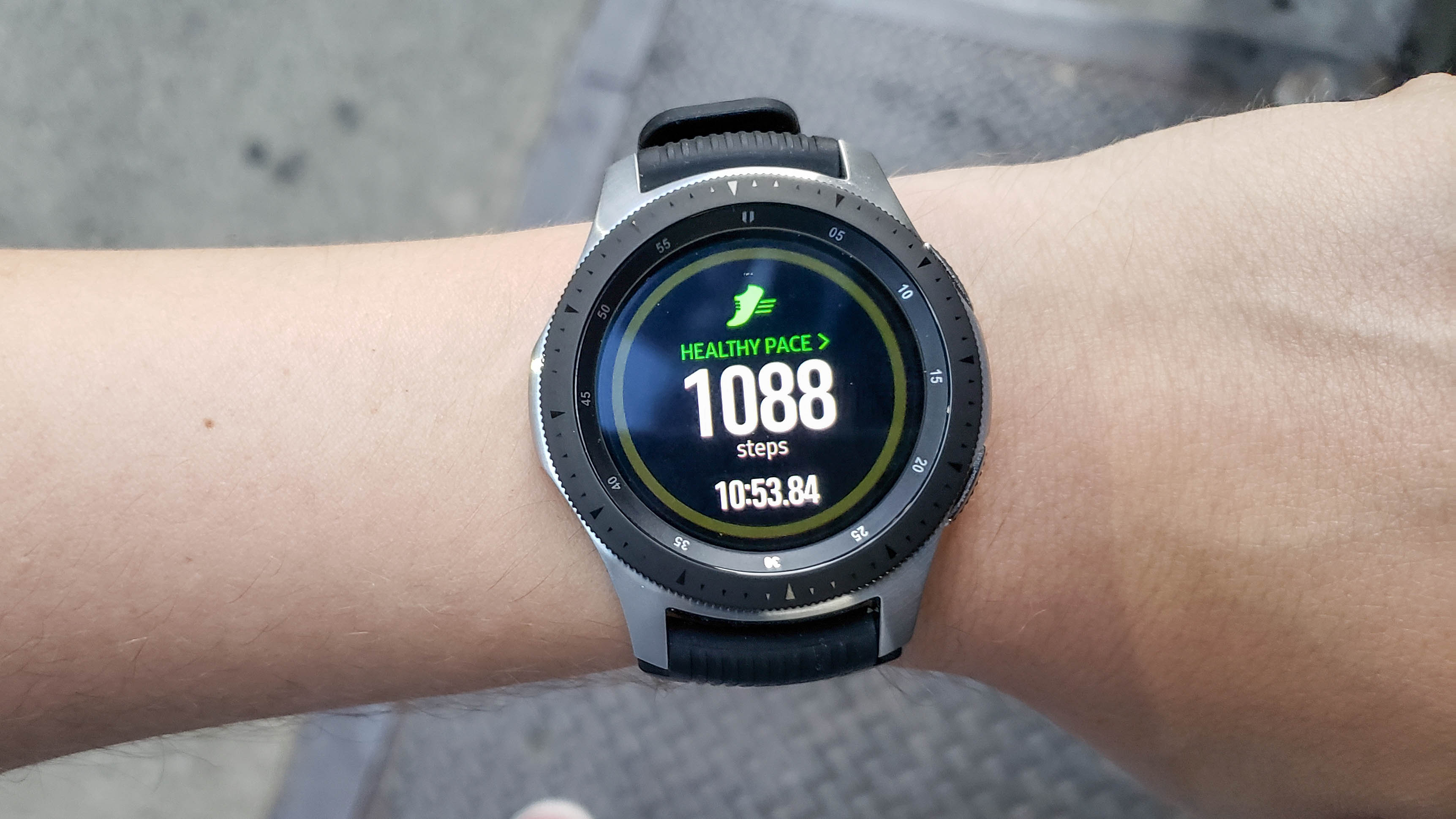
Samsung Galaxy Watch 3 vs Samsung Galaxy Watch fitness
The big addition to the Galaxy Watch 3 is its SpO2 monitor, which tracks the oxygen levels in blood. That’s a feature found in the Withings ScanWatch and is rumored to be coming in the Apple Watch 6, which enhances sleep tracking. The Watch 3 also adds an electrocardiogram (ECG) app and has blood pressure monitoring.
The latter requires medical certification in every region the Watch 3 is released – which means the feature will be disabled until it’s certified, as is happening in the US until the FDA clears that particular part of the device, as it approved the ECG app. (Both are live in South Korea, for instance.)
Given the Watch 3 inherits most of the original Galaxy Watch’s fitness software, adding seven new workout activities for a total of 40. The Watch 3 adds the capability to activate workouts by voice as well as cast the Samsung Health app to Samsung TVs.
Training mode allows you to customize which metrics you’d like to display as complications, from VO2 to balance and stride. Samsung consulted with the National Sleep Institute to improve the sleep tracking feature, which automatically tracks your sleep cycle and gives a report on sleep quality in the morning.
But don’t sell the original Galaxy Watch short – it still auto-tracks six major workouts like walking, running, cycling, and rowing, nudges you to move if you remain sedentary too long, and has adequate sleep tracking. But again, the Watch 3 builds on all this and adds more, meaning its fitness capabilities exceed an already decent selection in the original Galaxy Watch.
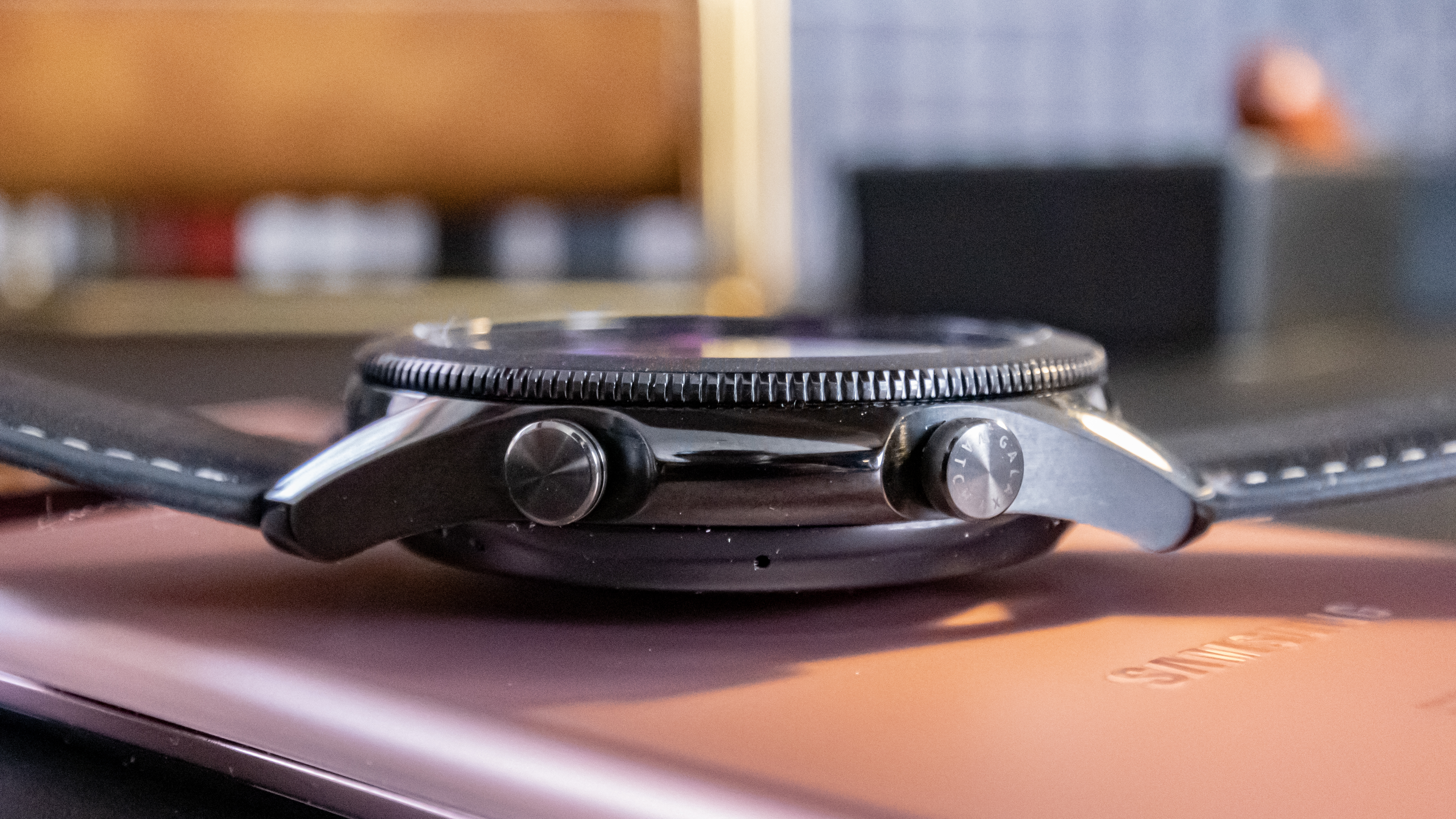
Samsung Galaxy Watch 3 vs. Samsung Galaxy Watch performance and battery
The Galaxy Watch 3 packs the same Exynos 9110 chipset as the original Galaxy Watch – the improvements lie in the new smartwatch’s 8GB of storage, which is double its predecessor’s 4GB. That’s more room for media and apps. The Watch 3 packs 1GB of RAM, which is more than the original Galaxy Watch’s 42mm version (768MB RAM) but less than the 46mm model (1.5GB RAM). (That's not exactly worrying: the Apple Watch 5 runs on 1GB of RAM.)
Battery is where the Galaxy Watch 3 may lose pace with its predecessor. The capacity for the larger 45mm version of the new smartwatch is 340mAh, while the 46mm Galaxy Watch packed a whopping 472mAh that lasted over three days without recharging in our testing. We haven’t extensively tested the Watch 3, but that lower value is concerning and we’ll be sure to push it to its limits in our full review.
We’re consciously comparing the larger models of both watches, which have noticeably more capacity than the smaller versions: for instance, the 41mm model of the new Galaxy Watch 3 has a 247mAh battery, while the 42mm version of the original Galaxy Watch has a 270mAh battery.
Again, we haven’t tested both versions of the new watch, but the older watch saw a noticeable difference in battery life – from two days in the smaller smartwatch to three, four, and sometimes even five days without a recharge.
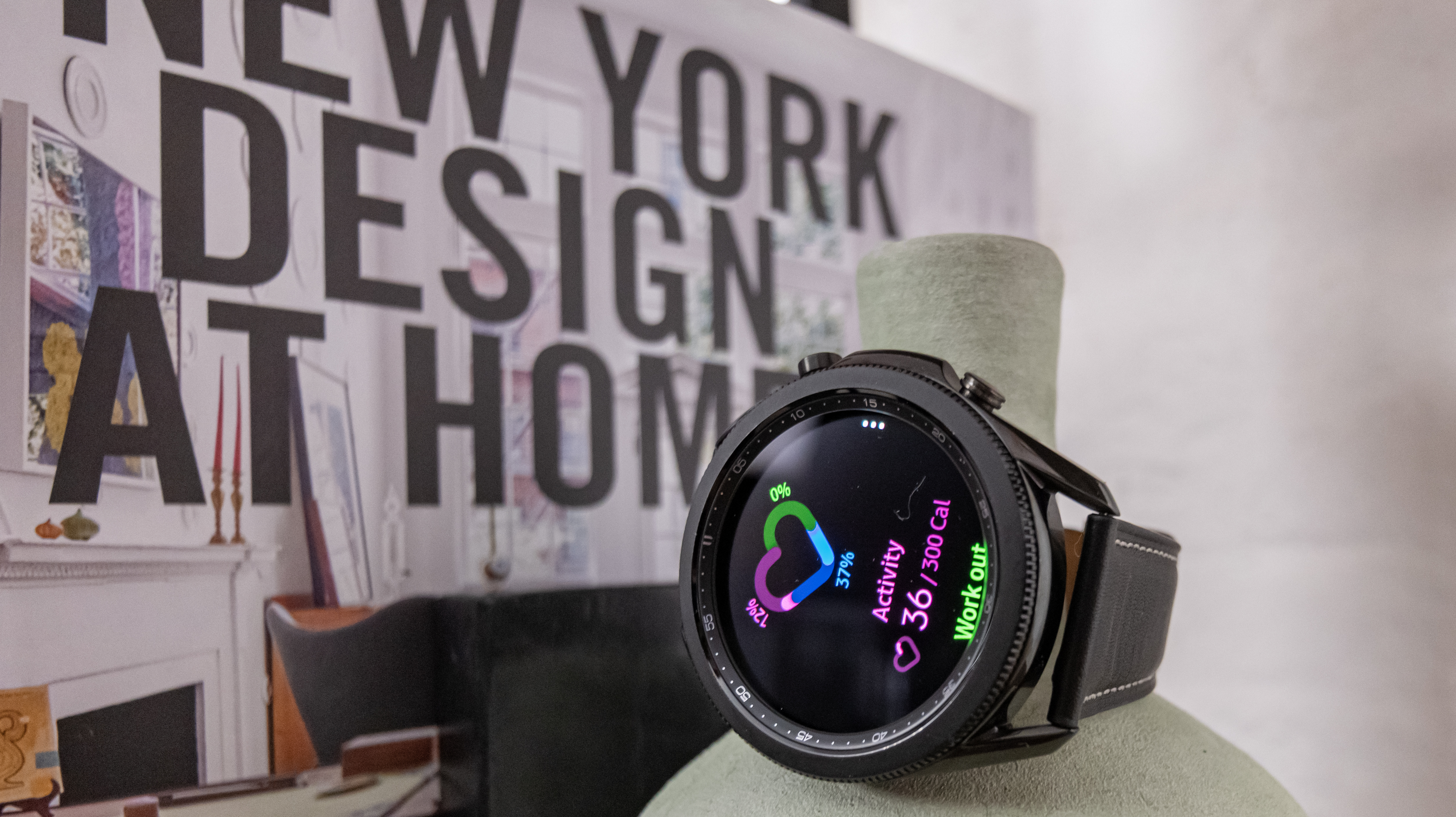
Takeaway
It’s hard not to like the new Galaxy Watch 3, with its leading specs and cleaner look over the original Galaxy Watch. It’s also noticeably lighter, which is an unsung quality in a watch you might use casually and in workouts.
But do these improvements warrant the increased price? That’s up to the consumer, as the new Galaxy Watch 3 does have certain perks – ECG, SPO2 tracking, improved fitness – that might be worth the cost.
For those who want a sturdy smartwatch to pair with their Android phone for basic tracking and tasks, it’s hard to see the Galaxy Watch 3 being worth the extra expense. But if the original Galaxy Watch is anything to go by, the new smartwatch may replace its predecessor to top our best smartwatch list for years to come – and be worth the investment.
- Stay up to date with the TechRadar newsletter

from TechRadar - All the latest technology news https://ift.tt/3kfXS5y
via IFTTT
Subscribe by Email
Follow Updates Articles from This Blog via Email



No Comments